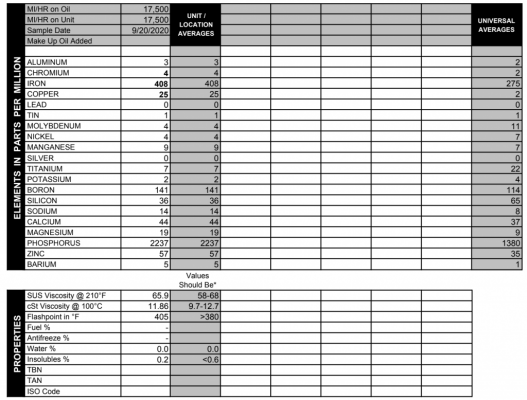2020ExpyPlatinum
Well-Known Member
Oil changes are important on direct injection gasoline engines. Fuel dilution can occur which will lower the viscosity of the oil and can harm internal components.
I never wait for the factory light to go off, I try to change the oil every 5,000 miles. Make sure if you do your own oil changes to use a Motorcraft filter, the way the oil filter sits it has a back flow preventer to prevent the oil from constantly draining out of the filter.
This may sound overkill, but I push the gas pedal to the floor and crank the engine before startup which prevents the engine from starting, but you will see the oil pressure gauge move upwards to prelubricate components before the engine starts.
Not something people are going to do, but being an engineer I can tell you the hardest and most wear on an engine occurs on startup and if all the components have no oil on them it will increase the wear.
Transmission and differentials I would do every 30,000 with heavy towing and 60,000 with minimal to no towing. I followed these intervals on my jeep grand cherokee and I am proud to say I have over 650,000 miles (original engine, transmission and differentials). Oil doesn't break down, but the additives do which is why it is important to exchange fluids as time goes on.
Brake fluid gets flushed at 60k and replaced, coolant I always did between 80k and 100k.
The manufacturer recommendations are a general reference. Only you will truly know how you use the vehicle and the environment you run in. Sorry this is all overkill, but just giving you my opinion.
I also send oil analysis out periodically, sending an oil analysis out on transmission and engine oil can give you a good idea on what is happening to the fluid as it ages as well as a way to monitor for potential issues. Once you start building a trend you can tell by looking at numbers if something is starting to wear out internally in the engine somewhere.
I never wait for the factory light to go off, I try to change the oil every 5,000 miles. Make sure if you do your own oil changes to use a Motorcraft filter, the way the oil filter sits it has a back flow preventer to prevent the oil from constantly draining out of the filter.
This may sound overkill, but I push the gas pedal to the floor and crank the engine before startup which prevents the engine from starting, but you will see the oil pressure gauge move upwards to prelubricate components before the engine starts.
Not something people are going to do, but being an engineer I can tell you the hardest and most wear on an engine occurs on startup and if all the components have no oil on them it will increase the wear.
Transmission and differentials I would do every 30,000 with heavy towing and 60,000 with minimal to no towing. I followed these intervals on my jeep grand cherokee and I am proud to say I have over 650,000 miles (original engine, transmission and differentials). Oil doesn't break down, but the additives do which is why it is important to exchange fluids as time goes on.
Brake fluid gets flushed at 60k and replaced, coolant I always did between 80k and 100k.
The manufacturer recommendations are a general reference. Only you will truly know how you use the vehicle and the environment you run in. Sorry this is all overkill, but just giving you my opinion.
I also send oil analysis out periodically, sending an oil analysis out on transmission and engine oil can give you a good idea on what is happening to the fluid as it ages as well as a way to monitor for potential issues. Once you start building a trend you can tell by looking at numbers if something is starting to wear out internally in the engine somewhere.
Last edited:


